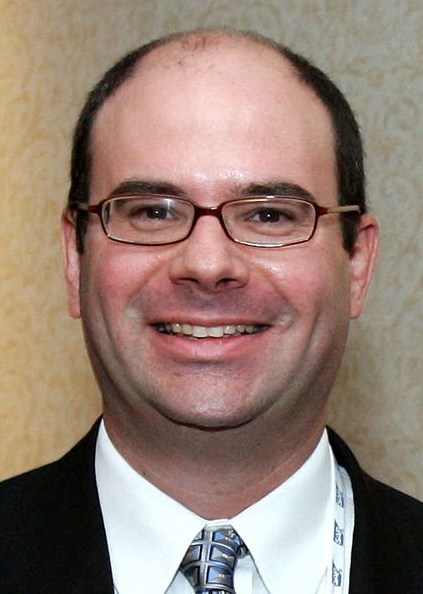Organizations continue to evolve their corporate citizenship efforts to include environmental, economic, legal, ethical and philanthropic responsibilities.
As a result, professional communicators often work with broad definitions of corporate social responsibility as they counsel the C-suite and senior executives on appropriate actions.
Although different CSR models exist, the Center for Corporate Citizenship at Boston College states that an organization’s social vision should reflect on all of its actions and how they “minimize harm, maximize benefit, are accountable and responsive to shareholders and support financial results.”
For business-to-business enterprises, corporate social responsibility strategies must reach audiences beyond direct stakeholders such as customers, employees, investors or business partners. B2B communicators typically address service or supply chain relationships that extend to downstream providers and the local communities in which they operate.
To learn more, we queried top communications strategists with this two-part question: How does your organization define corporate social responsibility, and how are its CSR activities aligned with the communications strategy?
EVAN WELSH
 |
Director, Global Media Relations, SAP
SAP’s corporate social responsibility platform, “to help build better communities,” is aligned to the SAP vision: “SAP makes the world run better.” SAP’s CSR strategy aims to create a legacy of social commitment.
To reach this goal, the company is inspiring and engaging our nearly 50,000 employees to give what they are best at giving: their skills, their commitment and their compassion. SAP’s unique value here is essentially how we connect people and data, so our CSR program focuses on connecting people to opportunity. Ultimately, our goal is broad and equal participation in the global economy.
Working together, we can create a better community and positive social change. SAP’s approach to social change is based on three tenets for building better communities: basic human needs, education and economic opportunity.
CSR, as an internal group, sits in Global Communication and is tightly aligned with SAP’s overall communications efforts and strategy, in particular with employee communications. Another key connection point is the relationship between CSR and sustainability. Currently, there is an effort under way to more closely bridge the gap between the two.
HELENE V. GAGNON
 |
VP, Public Affairs, Communications and Corporate Social Responsibility,
Bombardier Aerospace
So much more is expected of us today. Having safe aircraft is no longer enough, they must also contribute to a greener planet. The health and safety of our employees is paramount, but ensuring our manufacturing operations leave a minimal environmental footprint is also a priority. Our presence in many countries worldwide comes with the expectation that we will collaborate with local leaders and create value for the community.
At Bombardier, corporate social responsibility means balancing long-term and profitable growth with the responsible management of our impact on communities, the environment and the economy. To ensure our corporation manages its impact on key stakeholders responsibly, a constructive dialogue must be established with them—and that’s our role. As communicators, we help create and maintain mutually beneficial relationships with internal and external stakeholders, and this can only succeed if it is done responsibly.
PAUL J. GENNARO
 |
Senior VP, Corporate Communications & Chief Communications Officer, AECOM
AECOM specializes in engineering, architecture, design, planning, project/construction management and defense contracting. Our 52,000 employees serve clients in over 100 countries around the globe.
AECOM’s emphasis on CSR is demonstrated by our commitment to conducting business in an ethical manner that minimizes our impact on the environment, reduces waste, protects the health and safety of our people, clients and communities and rewards the trust of all AECOM stakeholders.
We are proud of the services that AECOM offers to directly improve the lives of people around the world by creating, enhancing and sustaining the world’s built, natural and social environments.
As a global leader, we understand and accept the responsibilities inherent in creating a better world, and we find new opportunities every day to fulfill this obligation. We communicate our impact to internal and external stakeholders through all of our communications vehicles, as well as through dedicated channels such as our CSR Review.
FRANK MANTERO
 |
Director of Corporate Citizenship, GE
Citizenship at GE is more than a program or a set of good intentions—it is a full-time commitment built upon cultural behavior and actions. These actions do not exist alongside the company’s work as a commercial enterprise; instead, they are integrated directly with the business strategy. Like any part of the business, citizenship has defined goals, strategies and metrics that make it actionable and accountable.
At the heart of GE’s approach is a simple framework: Make money, make it ethically and make a difference. This is an integrated approach, as each piece depends upon the others for overall success.
From leadership views on citizenship to the tools used to prioritize the company’s efforts, GE is rigorous and deliberate about how it can help solve some of the world’s toughest environmental problems. This approach is recalibrated often to address changing circumstances and challenges—but the company’s values consistently ground its views on what’s important.
What these views confirm is that corporate citizenship is a process of continual assessment. Several communicators we reached out to declined the opportunity to share their responses, mainly because their CSR strategies were in the nascent stages of development or undergoing dramatic changes.
This is not unusual, as the Center for Corporate Citizenship’s research suggests that there are five stages of citizenship, from elementary to transforming. Progress is marked by how an organization performs in the following five areas:
• Citizenship concept: How is citizenship defined? How comprehensive is it?
• Strategic intent: What is the purpose of citizenship?
• Leadership: Do top leaders support citizenship? Do they lead the effort?
• Structure: How are responsibilities for citizenship managed?
• Issues management: How does a company deal with issues that arise?
• Stakeholder relationships: How does a company engage its stakeholders?
• Transparency: How open is a corporation about its financial, social and environmental performance?
CSR models for B2B companies may vary according to corporate culture or organizational complexity. What remains constant is this: Communicating the value of doing good is good for business. PRN
[Editor’s Note: For more articles on CSR, visit the PR News Subscriber Resource Center at prnewsonline.com/subscriber_resources.html.]
CONTACT:
B2B Communications is written and compiled by Mary C. Buhay, VP of marketing and business development at New York-based Gibbs & Soell Public Relations. She can be reached at [email protected].
